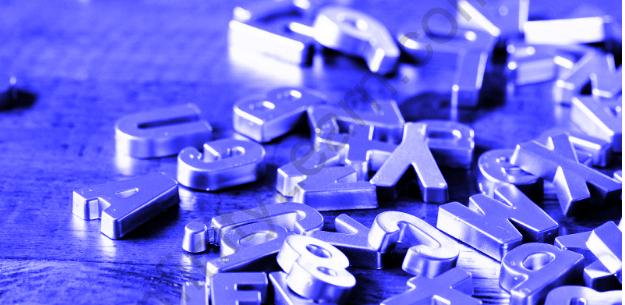Table of Contents
What is the definition of diamagnetism?
A magnet usually repels diamagnetic materials. Technically, these solids produce an induced magnetic field in the opposite direction of an externally applied magnetic field and are repelled by it. The behaviour of paramagnetic materials is exactly the opposite of this phenomenon.
Magnetic fields are created by the orbital motion of electrons on the atoms of diamagnetic materials, which causes tiny atomic current loops. When a material is subjected to an external magnetic field, these current loops tend to align in a way that opposes the applied field.
Diamagnetic Materials’ Properties
1. Because each atom’s magnetic moment is zero due to paired electrons, diamagnetic materials do not have atomic dipoles.
2. Diamagnetic materials will repel a magnet.
3. Because the field only repels the substances weakly, they tend to migrate in a non-uniform field from a strong to a weak part of the external magnetic field.
4. The strength of magnetization (I) is a small, negative quantity proportional to the magnetic field.
5. Magnetic susceptibility is quite low.
6. The permeability ratio is a little under one.
7. Diamagnetic materials are unaffected by temperature. These materials are exempt from Curie’s law.
8. A diamagnetic liquid depresses the Limb between the poles of a magnet in a U-Tube.
9. The magnetic dipole moment is extremely small, and it is polarised in the opposite direction as the magnetic field H.
10. When a diamagnetic liquid is placed in a watch glass between two pole pieces that are very close to one another, liquid gathers on the sides and a depression forms in the centre, where the field is strongest.
11. When a liquid is poured over two pole pieces that are sufficiently separated apart (more than in the preceding example), liquid gathers in the middle, where the field is weakest.
Diamagnetism Materials or Diamagnetism Applications:
Because diamagnetism is essentially the outflow of magnetic fields within a material, big and powerful diamagnetic materials can be levitated, or levitate magnets. The diagram below depicts the diamagnetic levitation of pyrolytic graphite over permanent neodymium magnets.
In superconductors, the diamagnetic response results in zero internal magnetic fields, as seen in the diagram below. As seen in the diagram above, the Meissner effect shows how some materials can be easily levitated in the presence of a powerful permanent magnet.
High-temperature superconductors, on the other hand, are made from unique materials that require expensive processing and cryogenic fluids to reach the superconducting state.
Important Things to Keep in Mind
Diamagnetism exists in all materials and is temperature independent, although it is often disregarded since it is so minor in comparison to paramagnetism and ferromagnetic effects.
Diamagnetism can occur in gases, liquids, and solids.
Superconductors are fundamentally diamagnetic materials with a volume susceptibility of 1 (v = 1). (dimensionless). Because they expel all magnetic fields, they are characterized as perfect diamagnets.
When a permanent magnet is placed close to a superconductor, the superconducting material generates a current that completely opposes the magnetic field of the permanent magnet. The applied magnetic field is ejected from the superconductor, resulting in a field of zero in its interior. A superconductor operates as a perfect diamagnet in the Meissner state.
Magnetic Lines of Force: General Properties:
The following are some of the most essential properties of magnetic lines of force:
Despite the fact that all magnetic force lines have the same magnitude, they are more concentrated near the magnet source and disperse as the distance from the magnet increases. As a result, a magnet’s magnetic force is stronger at short distances.
They try to find the path with the least amount of resistance between two magnetic poles. They try to build continuous loops from pole to pole in a single bar magnet, as shown to the right.
They never come into contact with one another.
They’re all the same in terms of strength.
When they go from a high-permeability area to a low-permeability one, their density diminishes (they spread out).
FAQs
A diamagnetic substance is heated between 300 and 650 degrees Celsius. What is the diamagnetic susceptibility change?
The temperature has no effect on diamagnetic susceptibility, hence heating a material will not modify its diamagnetic susceptibility.
What causes a negative diamagnetic susceptibility?
There are no total spins in diamagnetic materials since the electron pairs are all together. These materials' magnetic fields are in the opposite direction as the applied magnetic field. The low negative susceptibility of the diamagnetic indicates that it is diamagnetic.
Is water diamagnetic by nature? Why?
According to popular perception, water is diamagnetic. In diamagnetic substances, just the electron pairs exist. Water, on the other hand, contains two-electron bonding pairs between hydrogen and oxygen atoms, as well as two lone pairs in the oxygen atom. In paramagnetic substances, there is at least one unpaired electron. Something happens when a molecule has an odd amount of electrons (like in NO). When a few molecules contain an even amount of electrons, this can also happen (as in O2). As we can see, water repels the magnet. This happens because diamagnetism occurs when a magnetic field near water develops its own magnetic field, repelling the magnet.
What are the many types of diamagnetic materials?
Diamagnetic materials repel the magnetic field in the same way that an external magnetic field repels it, but they also generate an induced magnetic field in the opposite direction, producing a repulsive force.
From 200 to 450 degrees Celsius, a diamagnetic material is heated. What is a change in diamagnetic susceptibility?
Because diamagnetic susceptibility is unaffected by temperature, heating a material will have no influence on its diamagnetic susceptibility.
Give a couple of examples of diamagnetic materials.
Only a few examples are copper, zinc, bismuth, silver, gold, antimony, marble, water, glass, NACL, and other diamagnetic compounds.






